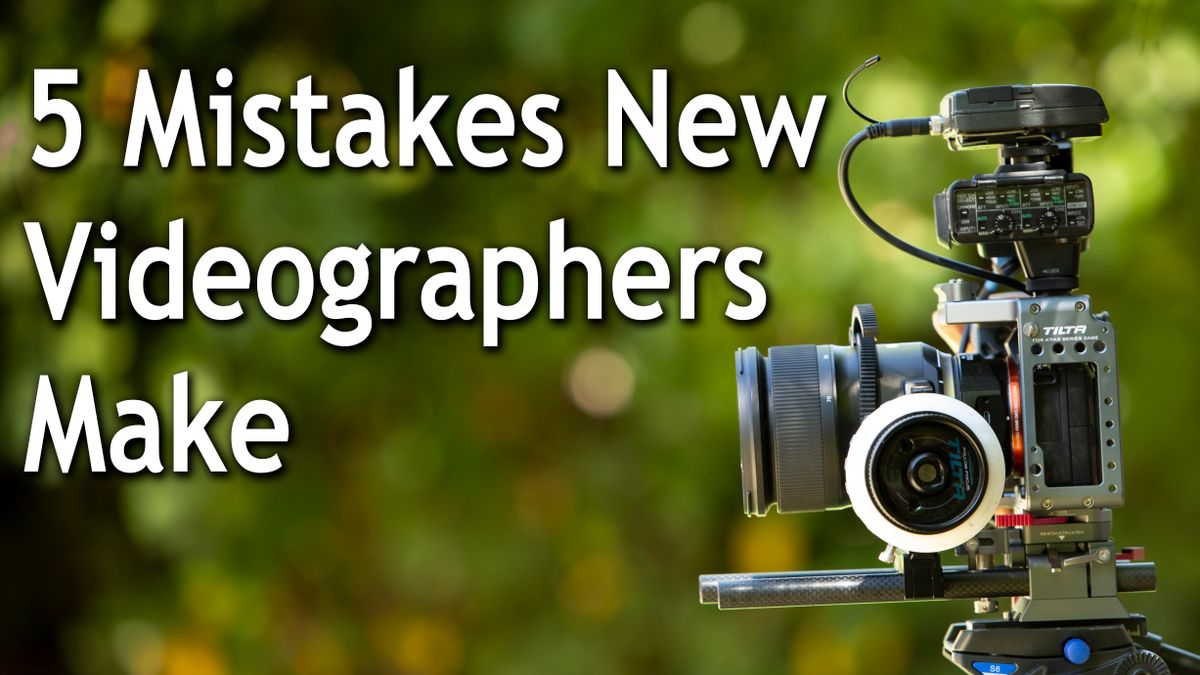
5 Mistakes Beginning Filmmakers Make and How to Avoid Them
I’ve taught a bunch of students in my time and we always run into the same mistakes. So this lesson is about not having those mistakes happen when you’re starting out.
#1 Camera Movement
Sticking to a tripod can be limiting in some instances. There are a lot of times in films where camera movement is important. It’s one thing that films have over photography. It moves! So use that to your advantage! Take the camera off the tripod.
Hand-Held
The easiest way to do this would be just taking the camera off the tripod and holding it with your hands. The thing you have to worry about here is how much camera shake you’re introducing to your frame.
Don’t just carelessly fling the camera anywhere so that it doesn’t settle. You want to make sure you’re cradling that camera. Stick your arms in next to your sides and keep the camera next to your center of gravity.
Get your hips in it! When you move from your hips, with your arms in, you’ll create a rocking motion and this will give you slight parallax in the background. This is used all the time in documentaries, reality TV, or other applications where a ‘realism’ is wanted.
The movement also has to do with directing the viewer’s attention. You are showing the audience what to see and what to pay attention to.
#2 Sound is Your Friend
Clean sound is what will make or break your project. And it is what separates the student films from the professional ones. Sound is important!! It counts for 50% of your viewing experience so don’t slack off on it.
IndiPro Tools Cinema Battery Starter Kit
Because sound is important, take into account the places you shoot and what the ambient noise sounds like. Don’t shoot next to a busy highway or an airport, you’ll hate yourself later. Shoot somewhere quiet where you can control the sounds. It’s easier to add those things later than it is to deal with terrible recorded audio.
Better Sound
Better sound starts with a better mic. Do not use your camera’s audio!! Please use something that records audio separately. Get a boom mic, a lavalier mic, a shotgun mic…anything is better than the camera mic.
Don’t forget about that room tone! Room tone is ambient sound without any other noise in your audio track. This can be laid down under your dialogue or help cover up edits when cutting between two takes.
#3 Depth of Field
Being able to correctly use depth of field will make you a better filmmaker. Use shallow depth of field to focus your viewer’s attention. Depth of Field is also great to review new information to the audience or to make things look more cinematic.
#4 Cover Yourself!
The next thing beginning filmmakers forget to do is getting enough coverage of their scene. You want to be sure you’re getting these angles so it’s easier to cut in the editing room.
What is the thing that makes film different from a play? It’s the different perspectives and viewpoints you can create! So make sure you’re getting wide, close, mediums, and interesting shots to make your film stand out!
Remember: wide, tight, and interesting!
#5 The Story
Having a story to tell is the main thing that separates beginners from pros. Have your story be visual and interesting! Use the medium of film to your advantage. A string of great visuals with music is a music video, it’s not a story.
It’s really tempting especially when you’re starting out to just concentrate on the visuals and not the story. There are so many ‘pretty pictures’ now, the only thing that’s going to differentiate you from the rest is your STORY.
People won’t stop and watch your movie because it’s pretty. They will watch your movie because it’s captivating. Something with a structure that has a beginning, middle, and end and communicates an idea are the most powerful.
Move people in your storytelling. Whether that’s moving to purchase, moving to vote, or decide, or to feel…all of those things are great stories to tell!
Beginning Film from a Photographer’s View
With that, we want to close with a plug for our new download! If you liked this lesson, it’s this and so much more in our three hours of content that teaches you the ins and outs of filmmaking. It’s designed for people who are already familiar with photography so we won’t be going over things like aperture, shutter speed and ISO. But we will be going through things like composition, lighting, and sound.
Gear Used
Vanguard Tripod – B&H / Amazon
